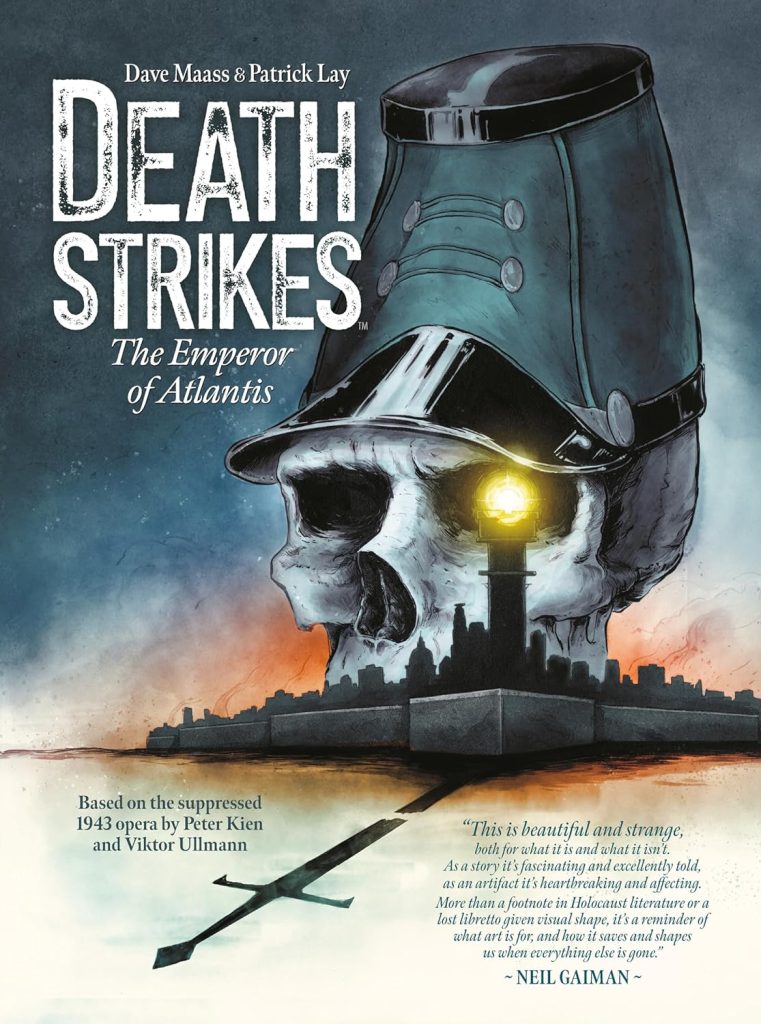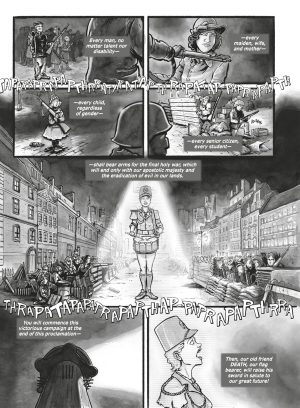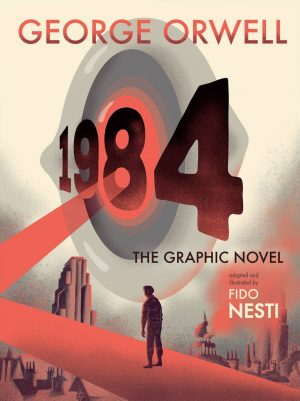Review by Frank Plowright
Death Strikes has an extraordinary origin, being based on an opera composed by two Jewish creators during World War II while captive in the Terezin ghetto located in what’s now Czechia. Terezia was a form of showpiece for the Nazis, allowing the prisoners greater freedom to indulge in cultural activities. Most inhabitants were nonetheless eventually taken to a concentration camp where they were murdered, but their works survive. Peter Kien wrote the librettos to accompany Victor Ullman’s score for an opera not performed until decades after it was written, and their collaboration is adapted here by Dave Maass and Patrick Lay.
Given the conditions under which it was created, Death Strikes is an extraordinary piece, very obviously allegorical in positing the survival of Atlantis and its growth into a super nation others fear, and which under Emperor Overall suppresses its population. The opening statement is by the embodiment of Life as Pierrot despairing the conditions. Even Death is depressed, and eventually goes on strike because his workload is excessive.
Rather than just adapting the story Maass and Lay retain the original intention of Death Strikes being an operetta with all the life that entails. Adapting anything musical for comics faces the immediate difficulty of characters reacting to music no reader hears. Yet the staging of opera, or intended staging in this case, to a great extent compensates by providing the familiar of costumes and movement. Lay conveys it imaginatively, creating lively sequences, but his greatest triumph is the overall mood. He has Atlantis being in advance of the 1940s when the work was written, but the designs of buildings and clothing are based on 1940s examples, so a retro-future results. It’s also worth mentioning that brutality is an underlying theme, yet Lay’s depictions are restrained.
There’s an extremely sardonic and very relatable view all the way through Death Strikes, from the paranoid, isolated Emperor to the personification of the mob in the form of the drummer. Allegory is used, but what’s here is largely straightforward, and in places surprisingly funny, although often bleakly so as the Emperor awaits the morning death figures with relish.
Given the situation of the original creators, hope for better times is integral, accompanying the ongoing darkness, yet the afterword reveals the difficulty Maass had in being true to Kien and Ullman’s intentions due to tinkering from others over the years. It means this isn’t a strict adaptation, but one that fits the narrative requirements of a graphic novel. Either way Death Strikes works. It could be read by someone knowing none of the background and yet still be relevant as a powerful condemnation of humanity’s worst instincts.
The book is rounded off with extensive background material detailing research and preparation.




